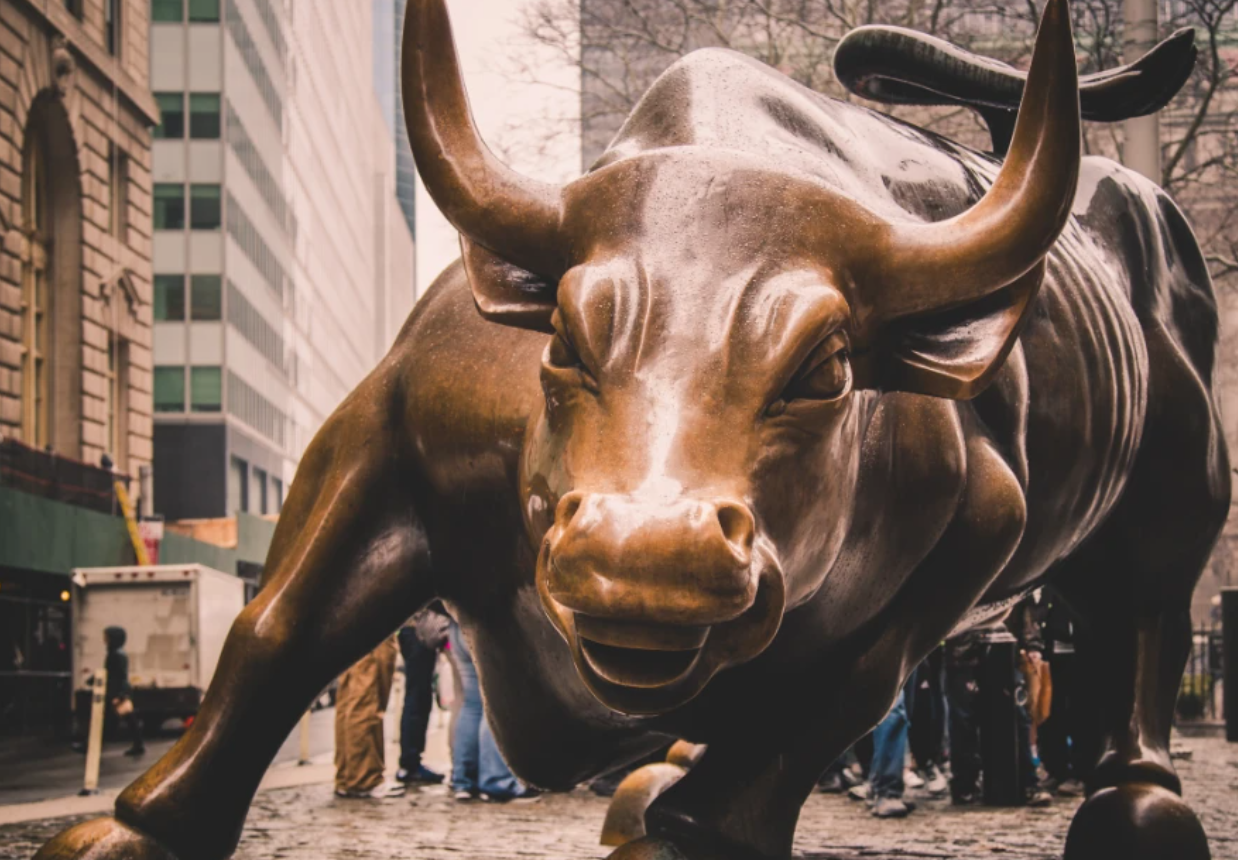随着股市创下新高,投资者将资金投入华尔街

【中美创新时报2024年3月23日讯】(记者温友平编译)目前看来没有什么可以困扰投资者的。标准普尔 500 指数有望迎来今年迄今为止表现最好的一周,涨幅超过 2%。这使得该基准指数今年上涨了 10% 以上,创下了一系列历史新高。《纽约时报》记者乔·雷尼森(Joe Rennison)对此作了如下报道。
其他主要指数,如道琼斯工业平均指数和以科技股为主的纳斯达克综合指数,最近的交易价格已达到或接近历史高位,微软、摩根大通和沃尔玛等个别公司也是如此。社交媒体公司 Reddit 的股价周四首日交易上涨近 50%,这表明投资者渴望今年有更多科技公司上市。
大量现金涌入助长了这场挤兑:截至 3 月 13 日当周,投资者向购买美国股票的基金投入了近 600 亿美元,创下了 EPFR Global 数据的记录,该公司20年多年来一直在追踪资金流向。随后到周三的一周资金流出——每周的资金流量可能会出现波动——并没有破坏这一势头。
尽管美联储周三预测今年通胀仍将略高于几个月前的预测,但本周涨势仍在继续。因此,央行官员预计 2025 年利率下降速度将比之前预期的更慢,并且仅勉强维持今年降息 3 个百分点的预期。
正如2022年利率快速上升导致股市走低一样,今年利率下降的预期也构成了股市上涨的部分理由。
但由于今年前两个月顽固的通货膨胀,降息的前景逐渐黯淡。期货市场的投资者此前预计美联储今年将降息六次,但最近改变了央行的观点,即降息的可能性只有三次。这对于股市的巡回上涨似乎并不重要。
对于一些投资者来说,看涨情绪表明美联储放松了对金融市场命运的控制,而基金经理则将目光转向确认经济正在蓬勃发展,并且即使利率保持在高位,也可以继续保持这种势头。
Regions Bank 首席投资官艾伦·麦克奈特 (Alan McKnight) 表示:“美联储需要通过削减经济来支持自身、支持估值和支持盈利,这是一个很好的转变。” “我们正在从美联储驱动的反弹转向经济和盈利驱动的反弹。”
对于一些纯粹主义者来说,情况一直如此。如果通胀更快地降温,这可能是经济放缓更快的迹象,从而促使一系列降息来支持经济。尽管经济仍在巡航,通胀在重返美联储2%目标的道路上遇到了一些阻力,但这也为该国上市公司带来了强劲的盈利。本质上,纯粹主义者认为,美联储已经根据市场的好消息调整了立场,而不是投资者的乐观情绪仍然受制于美联储的政策。
更重要的是,投资者在今年年初的主要担忧——随着经济衰退,通胀可能仍快于美联储的预期,甚至重新加速——尚未成为现实。
信安资产管理公司(Principal Asset Management)首席全球策略师西玛·沙阿(Seema Shah)表示:“如果通胀因经济强劲而略显强劲,那么总体上仍对股市有利。” “只要我们不是在谈论通胀复苏,这就是一个相当好的消息。”
根据世界大型企业联合会最近的一项调查,美国公司的首席执行官也变得更加乐观。公司正在增加回购自己股票的数量,这一策略被视为有助于推高股价。Facebook 母公司 Meta 在 2 月份宣布将开始首次发放股息,这是另一个信心的迹象。
企业将在几周后开始报告今年第一季度的盈利预测,虽然有所下降,但仍保持乐观,大型企业的利润有望连续第三个季度同比增长。
本文最初发表于《纽约时报》。
题图:华尔街金牛。(图源网络)
附原英文报道:
Investors pour money into Wall St. as stocks set new highs
By Joe Rennison New York Times,Updated March 22, 2024, 5:10 p.m.
It looks like there is little that can trouble investors at the moment.
The S&P 500 is on course for its best week of the year so far, up more than 2 percent. That added to gains that have lifted the benchmark index more than 10 percent this year, setting a series of record highs.
Other major indexes, like the Dow Jones Industrial Average and the tech-heavy Nasdaq composite, have recently traded at or near record highs, as have individual companies as varied as Microsoft, JPMorgan Chase, and Walmart. Shares of social media company Reddit jumped nearly 50 percent on their first day of trading Thursday, a sign that investors are eager for more tech companies to go public this year.
The run has been fueled by a ferocious influx of cash: Investors poured nearly $60 billion into funds that buy stocks in the United States for the week through March 13, a record for data from EPFR Global, which has been tracking fund flows for more than 20 years. A subsequent outflow for the week through Wednesday — weekly flow numbers can be jumpy — did little to disrupt the momentum.
This week, the rally continued despite the Federal Reserve’s forecast Wednesday that inflation would remain marginally hotter this year than predicted a few months ago. As a result, central bank officials expect interest rates to come down more slowly in 2025 than previously foreseen and only narrowly maintained their outlook for three quarter-point cuts this year.
Just as a rapid rise in interest rates knocked the stock market lower in 2022, the expectation for lower rates this year has formed part of the case for stocks to rise.
But the prospects for cuts have slowly been dimming, jolted by stubborn inflation in the first two months of the year. Investors in the futures market had expected the Fed to cut rates up to six times this year but have recently come around to the central bank’s view that only three cuts are more likely. It hasn’t seemed to matter for the stock market’s barnstorming rally.
For some investors, the bullishness is a sign of the Fed’s loosening grip on the fate of financial markets, with money managers instead homing in on confirmation that the economy is humming and can continue to do so even if rates remain elevated.
“It’s a nice transition we have had from the need for the Fed to make cuts to the economy supporting itself, supporting valuations, and supporting earnings,” said Alan McKnight, chief investment officer at Regions Bank. “We are moving from a Fed-driven rally to an economic- and earnings-driven rally.”
For some purists, this has always been the case. If inflation had cooled more quickly, it would have probably been a sign of a more rapidly slowing economy, prompting a series of interest rate cuts to support it. Although the economy is still cruising, inflation has met some resistance on its path back to the Fed’s target of 2 percent, but it has also contributed to robust earnings for the country’s public companies. In essence, the purists argue, the Fed has adapted its stance to good news for markets, rather than investors’ optimism remaining beholden to Fed policy.
More importantly, investors’ main fear at the start of the year — that inflation could remain quicker than the Fed would like, or even re-accelerate, as the economy falters — is yet to be realized.
“If inflation is a little strong because the economy is strong, then that is still broadly good for equities,” said Seema Shah, chief global strategist at Principal Asset Management. “So long as we are not talking about an inflation resurgence, it’s fairly good news.”
Chief executives at US companies are growing more optimistic, too, according to a recent survey by the Conference Board. Companies are increasing the amount of their own stock they are buying back, a tactic that is seen as helping push stocks higher. In another sign of confidence, Meta, the parent company of Facebook, announced in February that it will begin issuing dividends for the first time.
Forecasts for earnings in the first quarter of the year, which companies will start reporting in a few weeks, have fallen, but they remain positive, with big businesses on course for a third straight quarter of year-over-year profit growth.
This article originally appeared in The New York Times.



